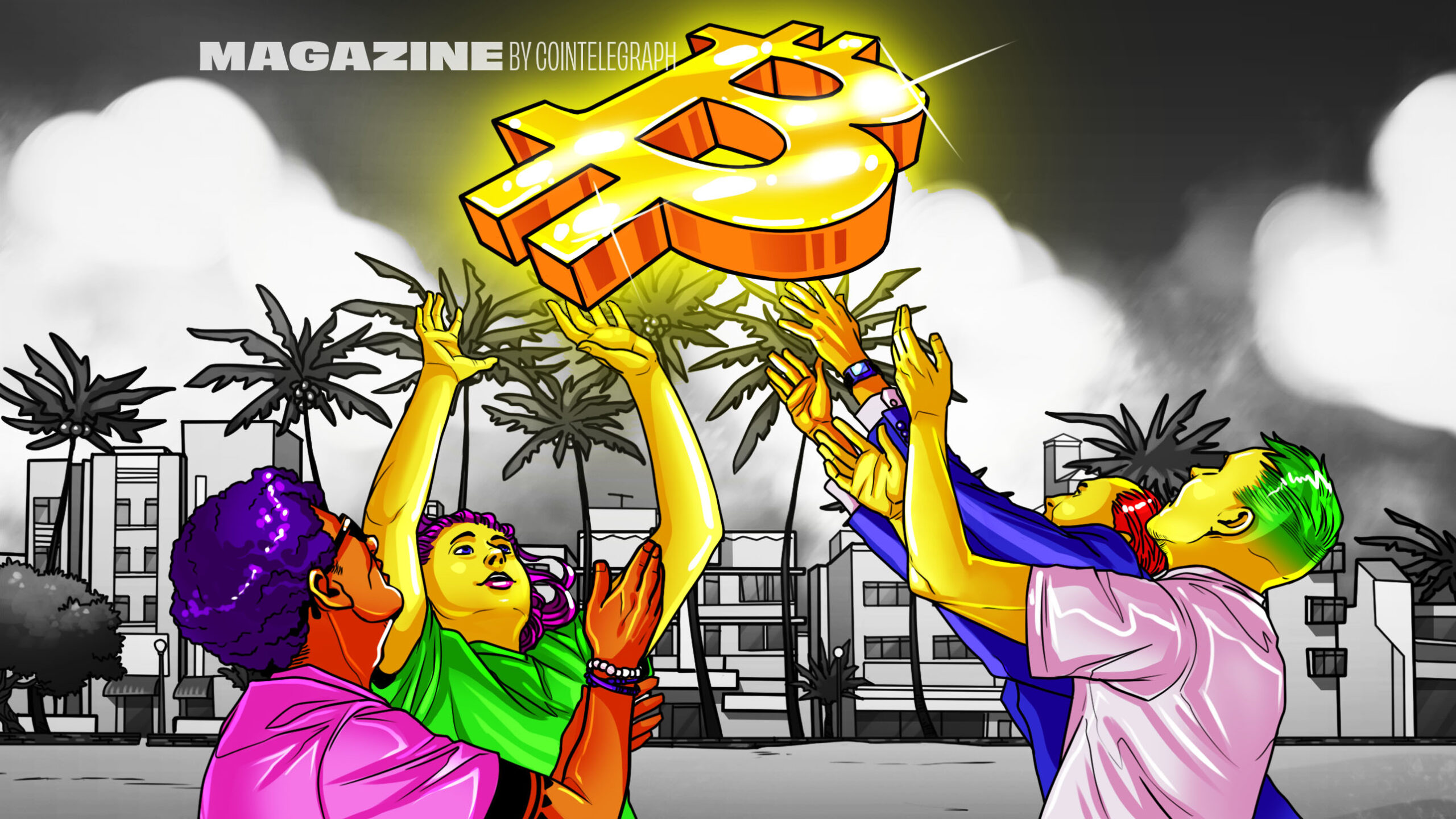Among the more memorable displays at Bitcoin 2023 is a real-life toilet with the logos of various non-Bitcoin cryptocurrencies. It’s an
Among the more memorable displays at Bitcoin 2023 is a real-life toilet with the logos of various non-Bitcoin cryptocurrencies. It’s an ad for a booth selling “buttwipes” that are “moistened with the tears of no-coiners.” The marketing message is clear: Bitcoin is the real thing — everything else is a shitcoin that belongs in the toilet.
But only a few steps away is another booth selling trading solutions for BRC-20 tokens, which some have labeled shitcoins for Bitcoin. Across the walkway are more booths slinging NFT minting software — also on Bitcoin. The conference even hosts a Bitcoin NFT art gallery.
As Miami hosts the largest Bitcoin conference for the third year in a row in May, the air feels markedly different. Though there are only 15,000 attendees compared to last year’s 35,000, the atmosphere has an energy and freshness that’s a world away from the gloom and bear-market blues that one might expect after the massive drops from the 2021 highs.

What’s changed this year is the ordinal renaissance, brought on by the recent reality of not only NFTs but tokens being issued on the Bitcoin blockchain. There are certainly haters — with some calling for a fork to undo the Taproot updates that made “spam” possible on the chain.
But despite the Bitcoin community’s traditional hatred for NFTs, tokens and DeFi, however, things are surprisingly quiet. Despite the blowback online, almost no one Magazine encounters at Bitcoin 2023 has anything particularly bad to say about Ordinals — and some did not even realize they are related to Bitcoin.
Among old-school Bitcoiners — in circles where the cryptocurrency that starts with “E” can barely be mentioned without drawing comments of derision regarding “monkey pictures” and scam coins — the Ordinal NFT phenomenon is decisively met with a quiet acceptance or shrug. Most old-timers aren’t interested but appear to accept that this is what the “young people” want today — that Bitcoin needs to change with the times.
Are Bitcoiners quietly accepting a new era where the network takes on a radically new role in the Web3 ecosystem, or is this the calm before the Bitcoin purist storm?
Bitcoin Ordinals: A new era
With the exception of the Lightning Network, which made fast and cheap Bitcoin payments possible so as to make mass payment feasible, the Bitcoin ecosystem has been relatively unchanging over the years from an outside perspective.
Mining, halvings every four years, the 21 million supply, hardware storage — beyond these core concepts, Bitcoin has lacked a certain dynamism that has placed it largely outside of the more colorful Web3 space of competing protocols, smart contracts, ICOs, NFTs, DAOs, stablecoins and myriad different tokens.
Indeed, the Bitcoin community has so ardently held on to its core tenets — rejecting new iterations, interpretations and innovations — that it is unironically considered by some as a religion, and semi-ironically as such by multitudes more.
But is a reformation — or even renaissance — in the works?

A stroll through Bitcoin 2023 — the world’s largest Bitcoin conference held in May in Miami — suggests so. This is because in addition to the yearly fare of booths related to mining, physical art, exchanges, wallet solutions and various hardware, a new entrant is out in force: NFTs.
Well, no — not NFTs. Bitcoiners call them “Ordinals.”
The word “ordinal” simply means a number used to put things in order: 5th, 6th, 7th, etc. Due to the November 2021 Taproot Bitcoin upgrade, individual satoshis, the smallest unit of Bitcoin, can now be individually numbered and thus made permanently identifiable.
Uniquely numbered satoshis — Ordinals — are nonfungible, meaning that they can no longer be substituted for another. Being (1) nonfungible and (2) tokens, they are NFTs by definition.
In Miami, perhaps the most visible landmark to this new phenomenon is Ordinal Alley, “the very first art gallery dedicated to Ordinal inscriptions” where various Bitcoin NFTs can be viewed.

Subhan Syed, co-founder of YourFund Coin, tells Magazine that “Ordinal art — whether a JPEG or MP3 — may seem irrelevant today, but as time goes on, collectors will look towards unique pieces that have truly been immortalized on the blockchain.”
The system is new and experimental, with Syed explaining that “the way inscription works today might be completely different a few years from now,” adding that it’s feasible that one day, there might not be enough satoshis to fill everyone’s inscribing needs.
“We might need a more robust solution in the long term that does not carry a load on the blockchain timestamp.”
Read also
cointelegraph.com
